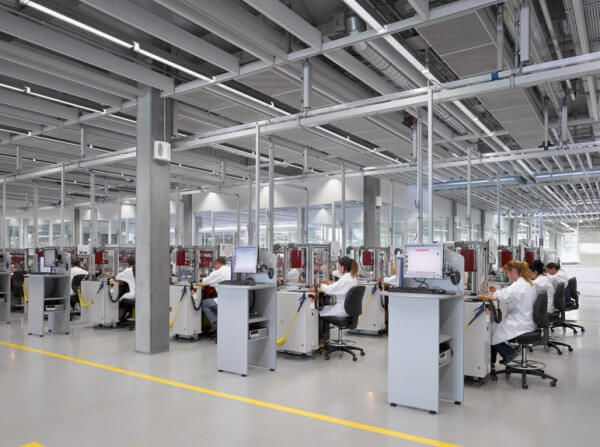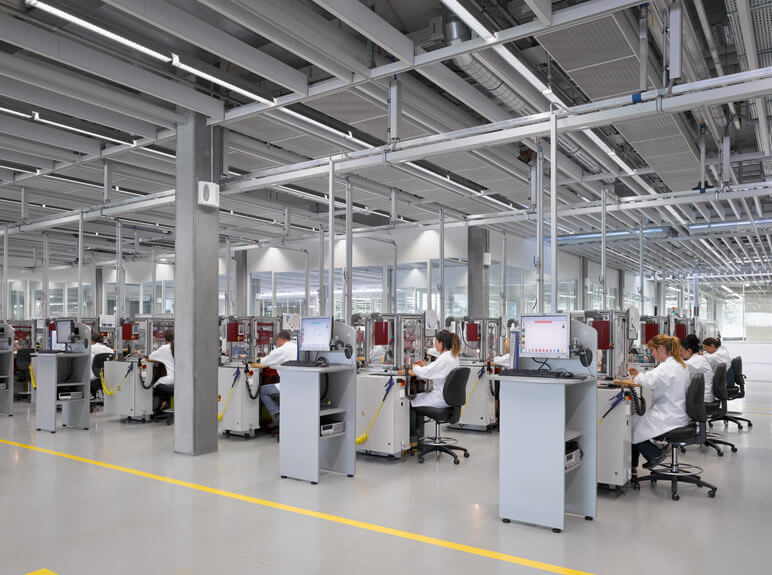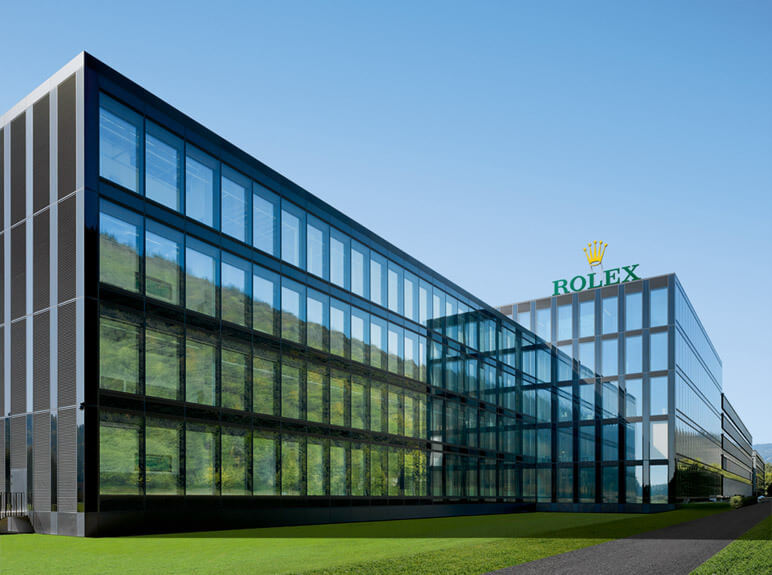What goes on underground is in fact the most impressive part of the site, as this is where the fully automated, computer-controlled stock of parts is located. This vast futuristic machine is the key to rationalised production, as it delivers parts to the workshops fast while minimising risks of loss or breakage. The 14 aisles are stacked floor to ceiling with parts in 46,000 compartments. Robots patrol the alleys at a speed of three metres a second, picking and placing components onto trays which are then sent in convoys along rails to one of the 22 terminals where staff collect their order.

Faster and more efficient
There is a compelling logic behind this vast system: that the 770,000 or so movements which Rolex makes each year should be produced not on seven sites as before, but under one giant roof. Gains made in efficiency equal gains in time. The company makes no secret of its aim “to optimise and further develop production capacity”. Evidence of how Rolex is achieving this can be seen throughout the factory. At other sites, for example, precision-turners can be dotted among the workshops. Not at Rolex in Bienne, where thirty brand-new machines are hard at work inside a vast space. It’s hard to imagine that this is Switzerland, and not some parallel world.
Equally impressive are the rooms where the bridges and plates, the building blocks of a movement blank, are made using specially developed, cutting-edge equipment. These flying-saucer-like machines incorporate CNC machining, stamping and measuring stations. Inside each capsule, more than fifty tools simultaneously machine sixteen parts to complete in one single cycle every operation needed to produce a blank: stamping, milling, precision-turning and diamond-polishing. Again, attention to detail is paramount. To make the process more efficient, the tool is innovatively designed to rotate on its own axis and work on the upper and lower surfaces of the part at the same time. As a reminder, a movement comprises a mainplate and a dozen bridges of varying shapes and sizes.
Not every operation is up and running in the new building. The different workshops will be transferred in stages, over a period of months, to ensure there is no break in production. Rolex’s new “vessel” should reach cruising speed by end 2013 so that the brand can continue to cut through the waters of time.



















